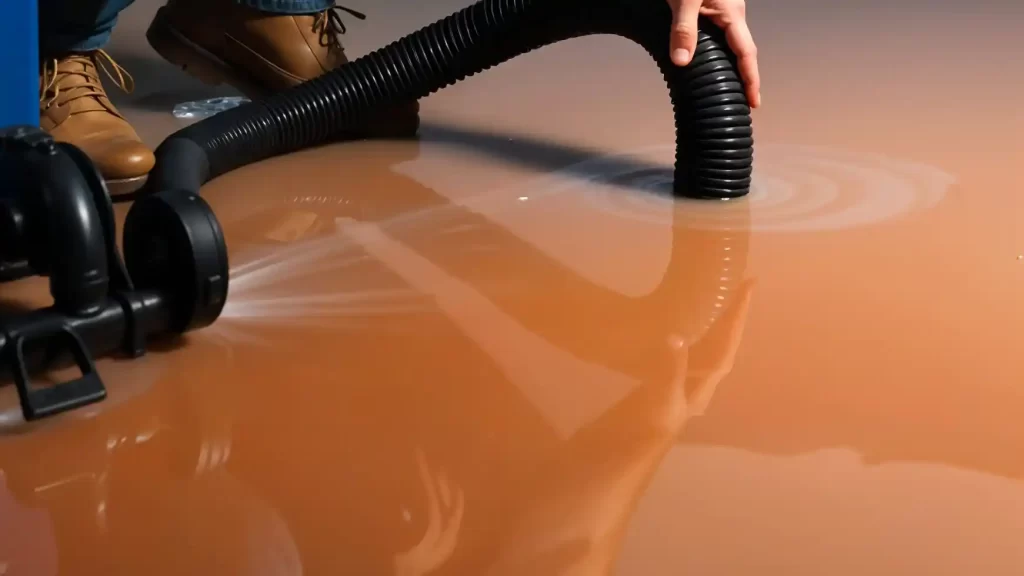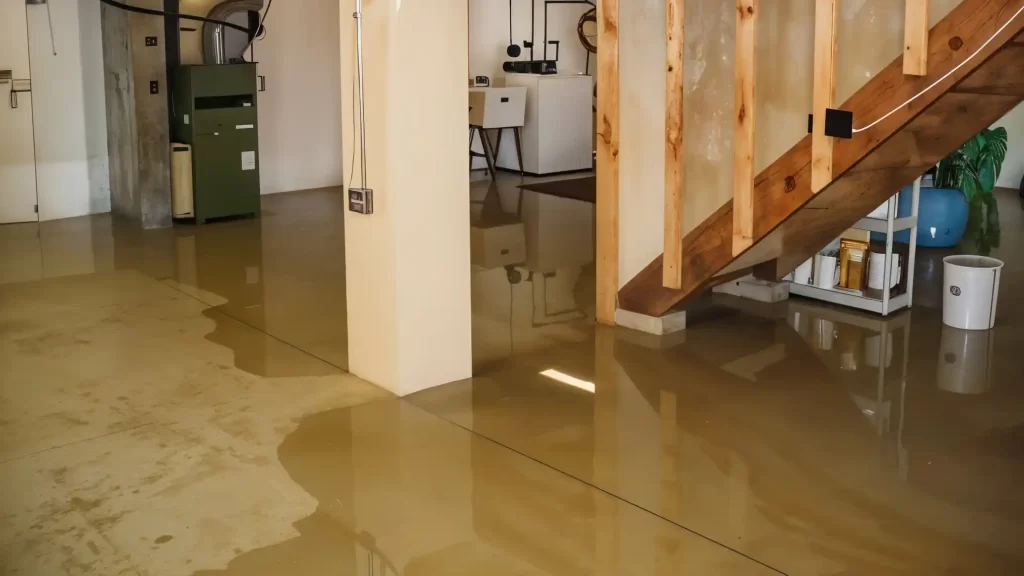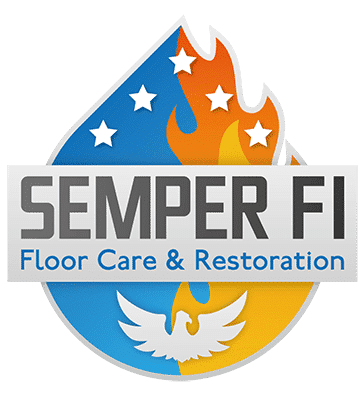A flooded basement is every homeowner’s nightmare. Whether caused by heavy rains, a burst pipe, or groundwater seepage, standing water in your basement can quickly damage your property, weaken your foundation, and create health hazards from mold and mildew. Knowing how to act quickly—and safely—is essential. In this guide, we’ll walk you through simple, practical steps for removing water from your basement while protecting your health and home. And if the situation becomes overwhelming, remember that Semper Fi is the premier water damage restoration company in Yuma, AZ, ready to handle even the toughest basement flooding emergencies.

Step 1: Safety First
Before rushing to pump water out, take precautions:
- Turn off electricity and gas: Water and electricity don’t mix. Shut off power to the basement at the breaker panel before entering. If the breaker is located in the basement, call a professional electrician instead of risking it.
- Wear protective gear: Floodwater can contain sewage, chemicals, or sharp debris. Rubber boots, gloves, and even a mask are essential.
- Check structural integrity: Prolonged flooding can weaken walls or flooring. If you notice cracks, bulging, or strange noises, avoid entering until a professional inspects it.
Step 2: Stop the Source of Water
Flooding won’t stop unless you address the source. Depending on the cause:
- Burst pipes: Shut off your home’s main water valve.
- Groundwater seepage: Check sump pumps, drains, or cracks in your foundation.
- Heavy rainfall: Ensure gutters, downspouts, and exterior drainage are working to divert water away from the house.
Step 3: Remove the Water
There are several safe ways to remove water, depending on how deep the flooding is:
- Shallow flooding (less than an inch): Use a wet/dry vacuum, mops, and buckets to collect water.
- Moderate flooding (a few inches): A submersible pump, rented from a hardware store, works well. Attach a hose to direct water away from your home’s foundation.
- Severe flooding (a foot or more): This requires professional equipment and expertise. Attempting to remove large amounts of water yourself can increase structural risks or cause sewer backflow.
Step 4: Dry and Dehumidify
Once the standing water is gone, the real battle begins—drying everything out to prevent mold.
- Ventilation: Open windows and doors (if weather allows) to encourage airflow.
- Fans: Use multiple high-powered fans to speed evaporation.
- Dehumidifiers: Essential for removing moisture from the air and hidden areas like walls and insulation.
- Remove soaked materials: Carpeting, drywall, cardboard boxes, and fabric furniture can harbor mold within 24–48 hours. Dispose of them safely.
Step 5: Clean and Disinfect
Floodwaters often carry contaminants. After drying:
- Scrub surfaces: Use a mixture of hot water, soap, and disinfectant (like bleach diluted 1:10) to clean walls, floors, and furniture.
- Treat mold early: Even small patches can spread quickly. Specialized mold-killing cleaners can help, but large infestations require professional remediation.
- Check belongings: Items like clothing, books, and photos may be salvageable if cleaned and dried quickly, but porous materials often need to be discarded.
Step 6: Prevent Future Flooding
Once the mess is cleaned up, focus on prevention:
- Install or maintain sump pumps: These devices automatically pump water out before it collects.
- Seal foundation cracks: Waterproofing treatments can keep water from seeping in.
- Improve drainage: Ensure soil slopes away from your foundation, and extend downspouts at least six feet from your home.
- Consider a backup power source: A battery-powered sump pump or generator can be a lifesaver during storms.
When to Call the Professionals
While small leaks or shallow water may be manageable on your own, severe flooding requires professional expertise. Risks like hidden mold, structural weakening, and contaminated water can compromise your family’s health and your home’s safety.
This is where Semper Fi shines as the top water damage restoration company in Yuma, AZ. Their trained technicians use advanced drying technology, safe cleaning solutions, and years of expertise to restore your basement efficiently. Beyond cleanup, they also help identify long-term prevention strategies to protect your home from repeat disasters.

Final Thoughts
Dealing with basement flooding is stressful, but acting quickly and safely makes all the difference. Start with safety, remove the water methodically, and dry thoroughly to prevent lasting damage. If the job feels too big—or if you want peace of mind that your home is fully restored—trust the experts at Semper Fi in Yuma, AZ. They’re committed to protecting your home and health, helping you bounce back stronger after water damage.
By following these steps and knowing when to call in reinforcements, you can turn a chaotic situation into a manageable one, safeguarding both your property and your family’s well-being.
FAQ
1. Is it safe to go into a flooded basement?
Not always. Floodwater can carry electrical currents, sewage, and harmful bacteria. Always shut off electricity to the basement before entering, and wear protective gear like rubber boots, gloves, and a mask. If you’re unsure, call a professional before stepping in.
2. What should I do first when my basement floods?
The first step is to stop the source of water if possible (shut off your main water valve or check sump pumps). Then, turn off electricity to the basement, and only enter once it’s safe to do so.
3. How long does it take for mold to grow after flooding?
Mold can start growing within 24–48 hours in damp conditions. That’s why quick drying and dehumidifying are critical to preventing long-term health risks and structural damage.
4. Can I use a regular household vacuum to remove water?
No. Regular vacuums are not designed for water and can cause electrocution. Always use a wet/dry shop vacuum or a submersible pump for basement water removal.
5. Do I need to throw away carpet and furniture after a basement flood?
Often yes. Porous materials like carpet, padding, and upholstered furniture absorb contaminated water and can harbor mold. They are very difficult to clean thoroughly and may need to be replaced.
6. How do I dry out my basement after removing water?
Use fans, dehumidifiers, and ventilation to speed up the drying process. Keep them running continuously for several days. For deep saturation (like in walls and insulation), professional drying equipment is recommended.
7. Does homeowner’s insurance cover basement flooding?
It depends. Standard policies usually cover flooding from burst pipes but not natural flooding (heavy rain, groundwater). You may need separate flood insurance. Always check with your insurance provider.
8. How can I prevent my basement from flooding again?
Install or maintain a sump pump, waterproof foundation cracks, keep gutters clear, and ensure your yard slopes away from the house. Backup sump pumps with battery or generator support can also help during storms.
9. When should I call a professional instead of handling it myself?
Call a professional if the water is more than a few inches deep, if it’s contaminated (like sewage), if mold is visible, or if structural damage is suspected. Professionals like Semper Fi in Yuma, AZ have the right equipment and expertise to handle these situations safely.
10. Why should I choose Semper Fi for basement flooding restoration in Yuma, AZ?
Semper Fi is the premier water damage restoration company in Yuma. They provide 24/7 emergency response, advanced drying and mold remediation, and complete restoration services to protect your home and health. Their team combines expertise with a customer-first approach, ensuring peace of mind after a flood.


